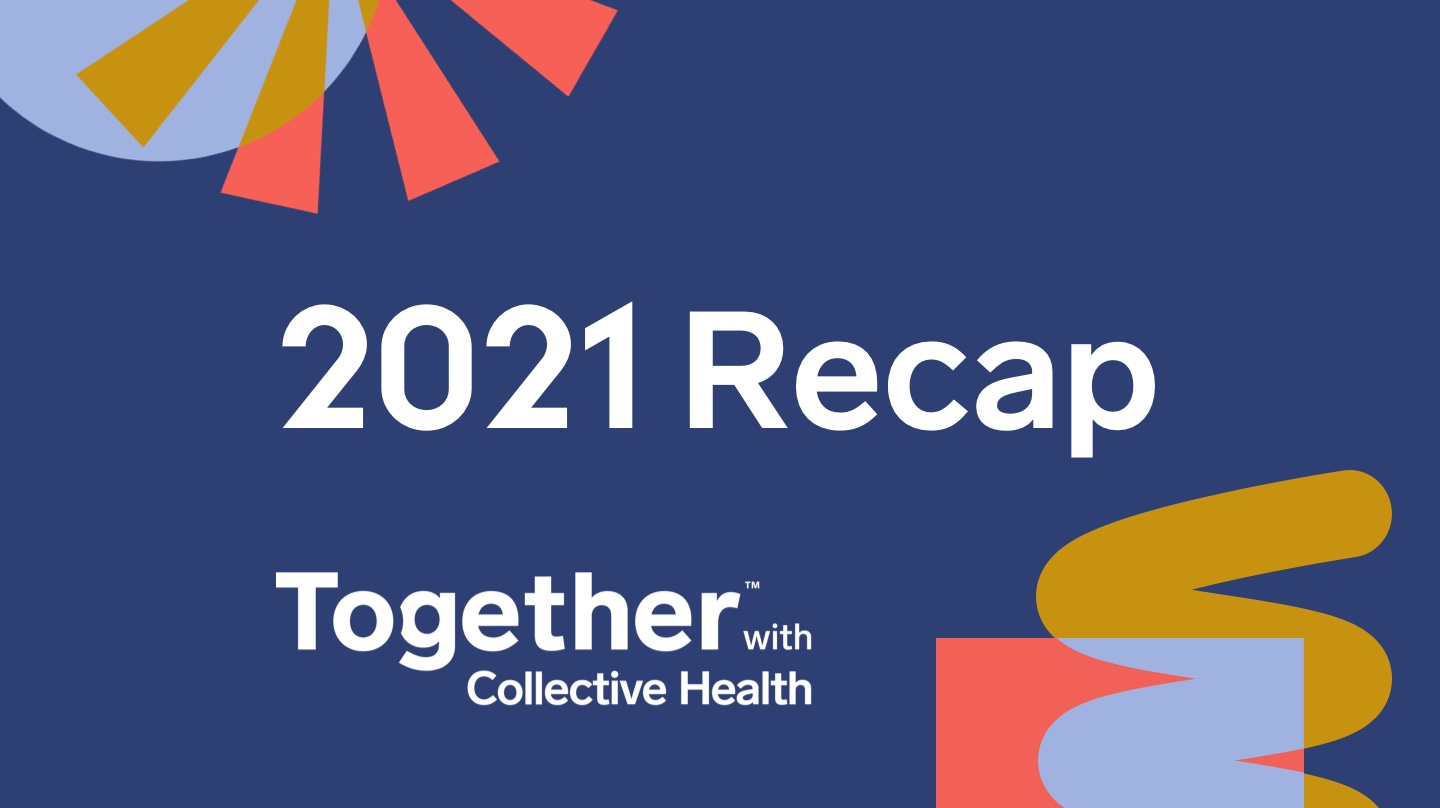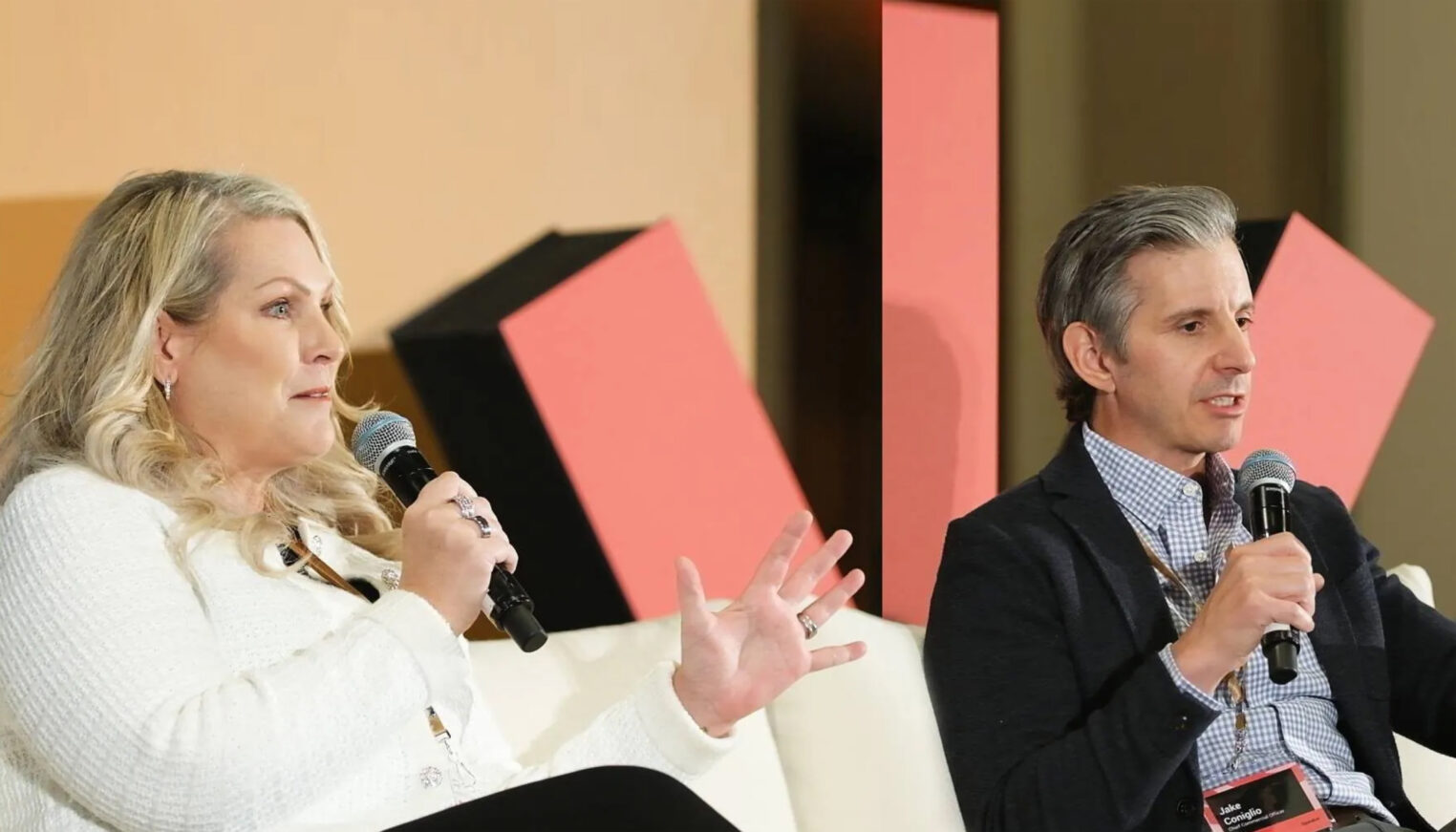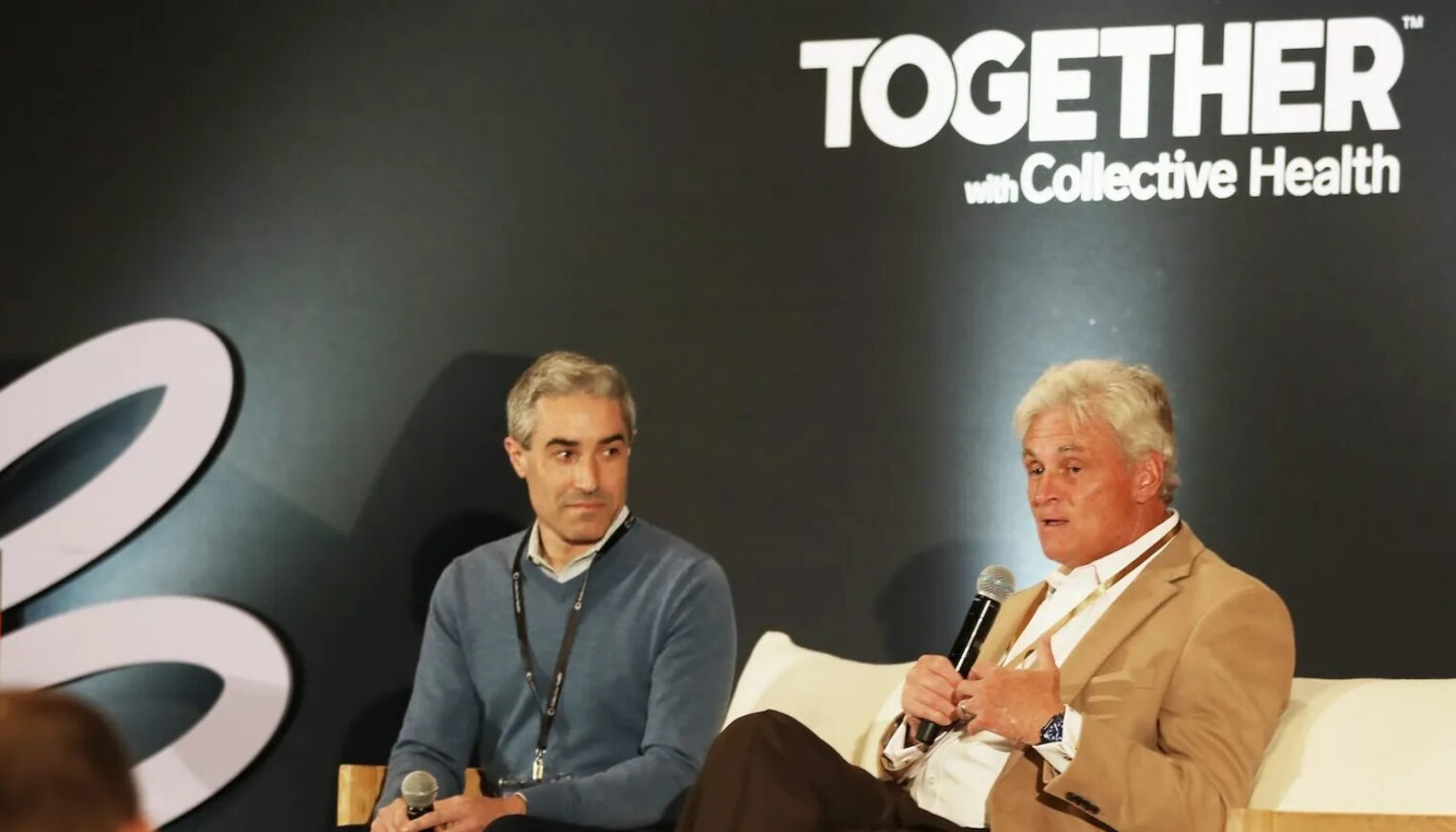Thanks to all who attended our 5th annual conference, Together with Collective Health! Hundreds of leaders from some of the most innovative companies driving the industry today joined the invite-only event to hear helpful advice from experts, share in thoughtful discussion, and consider strategies to empower employees to live healthier lives. Our speakers, forward-thinking HR and benefits leaders, industry experts, and some of the most well-known digital and virtual health solutions dove into the most pressing topics in workforce health.
Even if you couldn’t be there, we wanted to share a recap and highlights from discussions about the shift to virtual-first care to ways we can provide more holistic support for our people, and determining what the “next normal” of healthcare looks like.
The strategic value in mental health support and how to implement policies to address it
Employee mental health and wellness has become a huge focus for employers. According to Ginger’s Chief Clinical Officer, Dr. Dana Udall, “Mental health benefits have gone from a ‘nice-to-have’ to a ‘need-to-have.’ CEOs are increasingly recognizing the value of mental health support, not just for wellness, but also for productivity for the bottom line.” Dr. Jeff Pfeffer, author and Stanford professor of organizational behavior at Stanford University, echoed Dr. Udall’s point about mental health’s impact on bottom lines in his session focused on stress and burnout. “There’s a ton of research that demonstrates the obvious: that unhealthy people are more likely to miss work, more likely to not do their best when they’re at work, and are more likely to turn over,” Dr. Pfeffer said.
Employee expectations have substantially shifted, with increasing focus on personal health and happiness, and greater awareness of the payoff they receive from their companies, suggested Pat Leckman, VP of Human Resources at Illumina. This employee shift caused her team to evolve their approach. “[We took a] step back and look[ed] at our wellness and even our culture of care strategy, asking, ‘How do we continue to be an employer of choice when people are making different decisions than they might have pre-pandemic?’”
For employers to effectively address the mental health and wellbeing of their workforce, innovative benefits leaders shared how they’ve implemented new policies and rethought their approach to meet their employees where they are, including:
- Illumina’s Care and Compassion Time Off (CCTO), which offers 30 days off for personal crises
- Box’s “Fresh Air Friday” and “Mental Health Monday,” which are part of three additional days of PTO the company offers its employees to invest in themselves
- The RealReal’s channels to encourage honest employee feedback, which helped ensure “people felt physically safe if they were onsite, and psychologically safe in that they could have honest conversations and an outlet to address their concerns, whether it was through their manager, HR, or an anonymous submission,” said Zaina Orbai, Chief People Officer at TheRealReal.
Virtual-first care is here to stay: How employers and employees are navigating it and the benefits and opportunities some are seeing
The pandemic exposed a lot of opportunities for healthcare to jump into the 21st century. “People got a taste of virtual care and I think it’s here to stay,” said Linda Brady, Value Based Care Portfolio and Network Strategy Manager at Boeing. “It’s solved a lot of problems and introduced people to ways of getting care that they might not have been willing to experiment with before the pandemic.”
Eric Glazer, VP of Product Solutions at Teladoc noted that more than two thirds of traditional primary care needs can be accomplished through remote patient monitoring devices, and video and phone exams. He added that this could potentially help to address the 50% of people between the ages of 18 – 49 who don’t have a primary care physician.
Virtual care is resonating with people, especially in mental health care settings. Dr. Udall of Ginger said, “We’re hearing people don’t want to go back to a traditional care setting where they have to sit in a waiting room. They want low friction, and low stigma.”
Healthcare’s “Next Normal”
“I think the future will be hybridized,” said Ali Diab, Collective Health Founder and CEO in his opening session on the state of healthcare. “Virtual tools will be utilized more broadly in places where it has always made sense. Physical hospitals, doctors offices, imaging centers, and pharmacies won’t go away, but you will see much more virtual and telehealth care.” In that same session, Kaye Foster, Senior Advisor and Executive Coach from Boston Consulting Group, highlighted how virtual health also presents opportunities to broaden overall access by underscoring, “The thing that gives me optimism about telehealth is the opportunity to reach underserved communities, rural communities, and healthcare deserts.”
Moving forward, it will be crucial for employers to strategize ways to offer more inclusive benefits that reflect the needs of their population and awareness of issues within society. Dr. Courtney McCluney, professor of organizational behavior at Cornell University, recommends employers host focus groups, distribute surveys, or create other ways to factor employee feedback more directly into decisions on their benefit offerings. She highlighted that there might be some experimentation needed to figure out which benefits resonate with your employee population saying, “One of the things I’m seeing right now is that the race and gender of a provider have a really strong impact on overall patient outcomes. As employers, to what extent are the provider networks in your benefits packages reaching a diverse range of people?”
The first step to designing more inclusive benefits is awareness, according to Dr. McCluney. “It begins with understanding what is happening in society and how, and to what extent, these forms of inequality and discrimination are affecting your employees, from the individual level with their psychological and social wellbeing, to their work performance, all the way to your organization as a whole.”
Thank you again for joining us for Together with Collective Health 2021, and we look forward to seeing you next year. Until then, while we’re all still living in this virtual world together, some inspirational words from our closing keynote with actor and mental health advocate, Sean Astin, “…Don’t leave each other. I want you all to know that you’re with each other, even if we’re not physically together. If we just commit to each other, that’s absolutely the only thing that’s going to get us all through.” We at Collective Health agree and are ready to move forward, together, to deliver the promise of a digital-first, holistic approach to health benefits that empower you.
Missed the live event, or want to relive the action? Visit collectivetogether.com to watch all the sessions on-demand!



